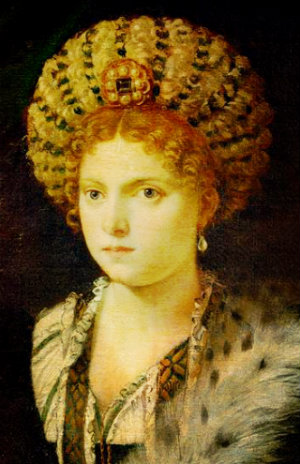The History of Art And The Curious Lives of Famous Painters
|
||||
|
Biography One of the most significant Bolognese painters of the Italian Renaissance. Francesco Francia was born in Bologna a bustling town in Northern Italy. He collaborated with both Raphael and Lorenzo Costa on religious commissions for the Catholic church. His work is gracefully elegant, warm in color, and shows the influence of his friend and mentor, Raphael. Francia is most celebrated for his gently rendered Madonna's, who are highly sentimental and spiritually uplifting. Accoding to distinguished art critic and historian, John C. Van Dyke, "The Perugino type and influence had found its way to Bologna, and showed in the work of Francia, a contemporary and fellow-worker with Costa. Though trained as a goldsmith, and learning painting in a different school, Francia, as regards his sentiment, belongs in the same category with Perugino. Even his subjects, types, and treatment were, at times, more Umbrian than Bolognese. He was not so profound in feeling as Perugino, but at times he appeared loftier in conception. His color was usually rich, his drawing a little sharp at first, as showing the goldsmith's hand, the surfaces smooth, the detail elaborate. Later on, his work had a Raphaelesque tinge, showing perhaps the influence of that rising master. It is probable that Francia at first was influenced by Costa's methods, and it is quite certain that he in turn influenced Costa in the matter of refined drawing and sentiment, though Costa always adhered to a certain detail and ornament coming from the north, and a landscape background that is peculiar to himself, and yet reminds one of Pinturricchio's landscapes. These two men, Francia and Costa, were the Perugino and Pinturricchio of the Ferrara-Bolognese school, and the most important painters in that school.
|
||||
|
About The High Renaissance Period Classical humanism, was a major factor of the Italian Renaissance. This philosophical movement was based on the idea that every persons life had value and dignity. Humanism also stressed man's position in the natural world. The Humanists believed modern man should look to the classical writings and art of the ancient Greeks and Romans as exemplary guides for ethical living and scholarship. Francesco Petrarch, 1304-1374, called the Father of Humanism, Italian Intellectual, Poet, and Humanist stated, "No one intellect should ever strive for distinction in more than one pursuit. Those who boast of preeminence in many arts are either divinely endowed or utterly shameless or simply mad. Who ever heard of such presumption in olden times, on the part of either Greeks or men of our own race? It is a new practice, a new kind of effrontery. To-day men write up over their doors inscriptions full of vainglory, containing claims which, if true, would make them, as Pliny puts it, superior even to the law of the land.. ." During the Renascence the spirit of an era awoke, revitalized with knowledge and creativity. Although art still served a specific functions, which were primarily religious, painters added more of their individual spirit and personal vision to their creations. John Ruskin, famous art historian declared, "The art of any country is the exponent of its social and political virtues . The art, or general productive and formative energy, of any country, is an exact exponent of its ethical life. you can have noble art only from noble persons, associated under laws fitted to their time and circumstance."
The major painters of the Renaissance were not only artists but men of great genius who gave the world their great intellectual gifts. Florentine and Venetian painting were both formed by extraordinary personalities. These independent creative geniuses tackled mathematical, artistic and philosophical problems of the highest interest, and presented solutions that have never lost their value. The sense of humanism pervading renaissance painting is still palpable. The painters touched on a multitude of issues regarding the human condition - death, love, reason, religion, universal morality, social problems.
|
||||
|
Key Descriptive Words and Phrases associated with the Renaissance Movement - rebirth, rediscovery of the classical world, publication of Della Pittura, a book about the laws of mathematical perspective for artists, sfumato, chiaroscuro, Savonarola, spiritually significant, illuminated manuscript, idealized biblical themes, scriptorium, illuminator, plague, Age of Discovery, curiosity about the natural world, realistic use of colours and light, Bonfire of the Vanities, Old Testament stories, ethereal and foggy backgrounds, Gospel parables, romanticized landscapes, Christian symbolism. Require more facts and information about Francesco Francia and the artists of the renaissance era? Poke around every nook and cranny of the known universe for information this subject. Search Here © HistoryofPainters.com If you like this page and wish to share it, you are welcome to link to it, with our thanks. If you feel you have worthwhile information you would like to contribute we would love to hear from you. We collect essential biographical information and artist quotes from folks all over the globe and appreciate your participation. When submitting please, if possible, site the source and provide English translation. Email to millardmulch@gmail.com |
